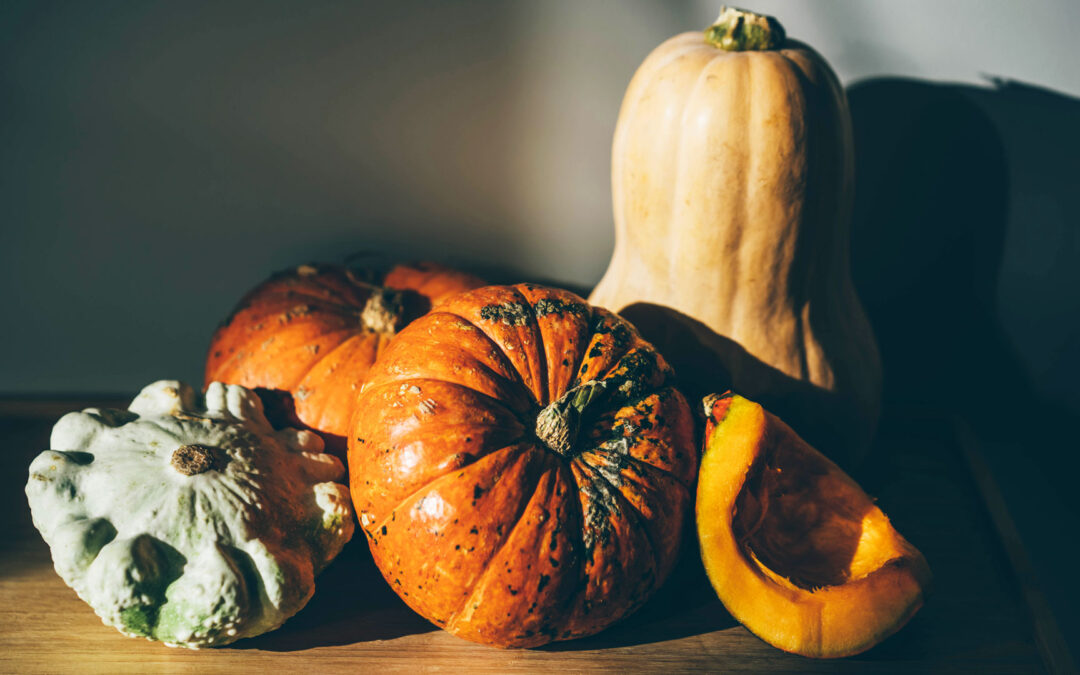It’s October, which means the spooky season has arrived! Many of us love to grab some pumpkins to make fun—or haunting—Jack-o’-lanterns and pumpkin pies from scratch. However, kids aren’t the only ones eager for tasty treats: garden pests love them, too!
Many bugs love gourds—these are crop plants like pumpkins, cucumbers, squash, luffa, and melons, but they are often harmful to the plants and quickly degrade them. What’s worse, if ignored, insects that infest your pumpkins or other gourds can also quickly get into your home! To help you ensure your pumpkins last a little longer and to protect yourself from an invasion, here are a few ways to trick the critters.
Get to Know the Enemy and Their Weaknesses
Aphids prey on multiple garden plants, and gourds are no exception. An infestation can cause an infection that spreads rapidly from vegetation to vegetation, noticeable by yellow leaves. They also leave honeydew, a sap (not the melon) that creates sooty mold turning the pumpkin black. To remove the sap, rinse the leaves with cold water until it comes off. Aphids will also suck all the juice out of your squash. You can quickly reduce aphid infestations by keeping releasing lady beetles into your garden.
Similar to aphids, whiteflies leave honeydew all over patches of fleshy fruits and vegetables. If you think you have whiteflies, look for tiny white insects on the leaves and the black sooty mold. You can ensure your gourds’ safety by regularly washing them and placing aluminum foil under your squash.
Squash bugs are attracted to squash, as their name implies. These pests mostly feast on the gourd vines and lay their copper-red eggs under the leaves. Squash bugs inject toxins into your plant, causing them to wilt and blacken. To avoid attracting these bugs, keep the area clear of vines from previous years and any debris that may be there. If you see one of these bugs, you must destroy them to save your squash, but be careful not to mistake them for stink bugs; they look similar, and both smell awful when squished.
A cousin of the cucumber, pumpkins are often attacked by cucumber beetles, a black and yellow striped creature around 0.36 inches long. It’s crucial to detect these pests as early as possible because the seedlings and roots are most susceptible to attack. That said, cucumber beetles may still cause problems even when the plant has matured. These insects spread mosaic disease as they move between plants, which causes leaves to develop yellow or dark green spots. Cucumber beetles are particularly active during warm and damp weather, so make sure to inspect them more during those periods. When you come across cucumber bugs, manually peel them off and destroy them. You can protect your garden with lightweight landscaping fabric that will let water, air, and sunlight through while keeping the bugs away.
How to Protect Your Jack-O’-Lanterns
Once your pumpkins or other carvable gourds are off the vine and sitting on your porch, it’s a good idea to take steps to prevent insects from destroying them. This is especially important if you put them out a few weeks before Halloween or if you want to last a few weeks after.
Protecting your pumpkins starts with making sure you thoroughly remove all the seeds and other innards. This will also prevent mold from developing inside. Once you’ve done that, you can treat the outside with lemon juice, which will prevent oxidation while also keeping the color bright. Vegetable oil or even Vaseline are other suitable treatments for the pumpkin’s exterior, which will keep bugs from being able to crawl on the outside.
Lastly, it’s a good idea to protect the inside, too. Start by spraying the inside with bleach water, which bugs hate. You can also use a citronella candle on the inside to repel any unwanted guests.
Calling In The Pros
If your pumpkins, gourds, or jack-o’-lanterns develop an infestation, and that infestation colonizes your home, please give us a call. We’ll make sure to remove them safely so you can continue your Halloween festivities bug-free.

